Feb 08, 2023
in Video, Parameter Summary, RS Composite
Instructional video on how to use Composite Relative Strength to improve your ETF backtesting process. #STUDY
to expand video on screen, click the '4 expanding arrows' icon in the bottom right corner of the video screen. Use the settings icon to change to 1080 quality if it seems at all blurry
See also: RS Parameter Performance Summary
Jan 30, 2023
in RS Composite
We have added a new backtest, Relative Strength Composite, which can protect against parameter choice misfortune by making it easy to diversify across a range of lookback values.
When relying solely on a single lookback period, though it may have backtested well, there's always the possibility that it may underperform in the future. The RS Composite backtest attenuates that risk by stepping through the return lookback periods, from your chosen minimum to maximum, and invests in the top (or bottom) x securities from each.
In the following example, the minimum length is 3-months, the maximum lookback is 12-months and the step value is 1. This means that, each month, the backtest will invest 10% in each of:
- Top security ranked by 3-month returns
- Top security ranked by 4-month returns
- …5-month returns
- …6-month returns
- …7-month returns
- …8-month returns
- …9-month returns
- …10-month returns
- …11-month returns
- Top security ranked by 12-month returns
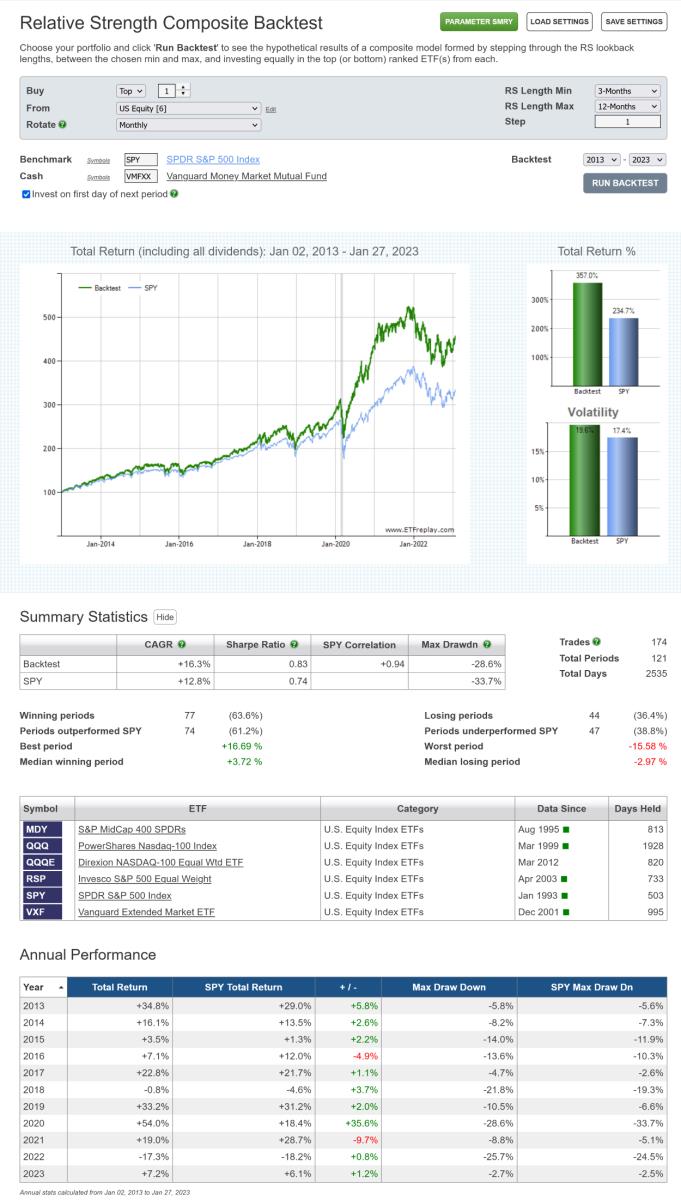
click image to view full size version
The step value can be increased to assess whether it is possible to retain a significant degree of diversification without needing to employ every return length. For instance, raising the step value to 3 in the above example will mean that the backtest ranks the portfolio ETFs by 3, 6, 9 and 12-month returns each month and invests 25% in the top ranked security from each of those.
Watch video: How to use Composite Relative Strength
The Relative Strength Composite backtest is available to annual subscribers, both regular and pro.
Note:
- Just as a diversified portfolio means that some part of it will always be a drag, a composite of model variants will always underperform the single best version of a strategy....but it also avoids being exclusively in the worst.
- To see how each of the return lengths performed individually, rather than as a composite, use the RS Parameter Performance Summary
Jan 03, 2023
in Total Return
2022 Total Return for the S&P-500 (both market-cap-weighted and equal-weight) and a selection of developed international and emerging market country funds.
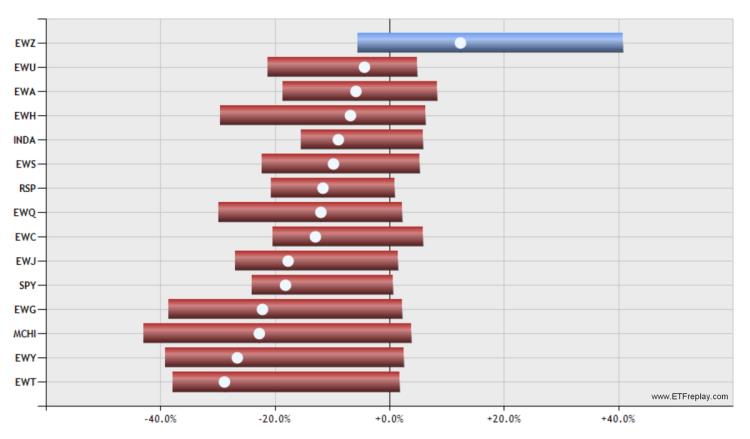
click image to view full size version
Dec 16, 2022
in Tracking Error
We have added some new functionality to the Correlation tool, Advanced RS Pro backtest and the My Portfolios page.
Correlation tool
There is now an option to change the chart to display the x-period Tracking Error, making it possible to see how closely security A has tracked security B and how that tracking has varied over time.
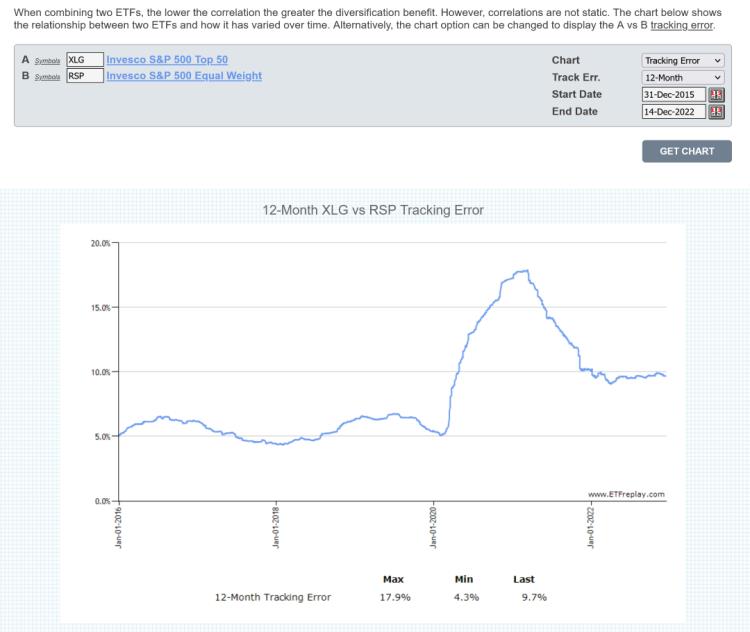
Advanced Relative Strength Pro
For Pro subscribers, the Hold Filter option is now available on each of the 4 portfolios of the Advanced RS Pro backtest.
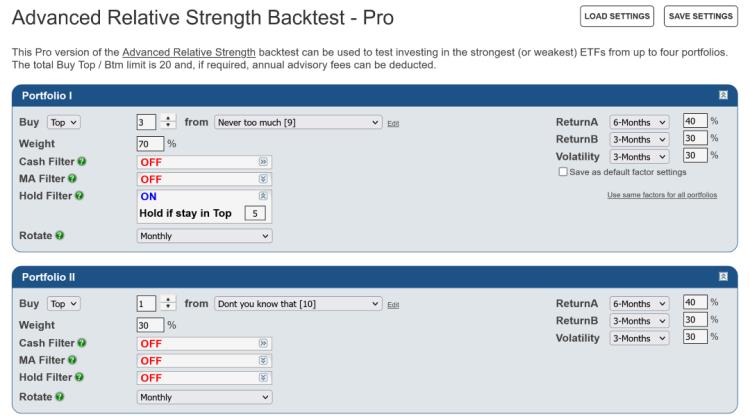
Portfolios
To assist subscribers that have a large number of portfolios, the My Portfolios table now has a date last modified column, which can be sorted. You can now also search for a portfolio by name, or find all your portfolios that contain a specific symbol.
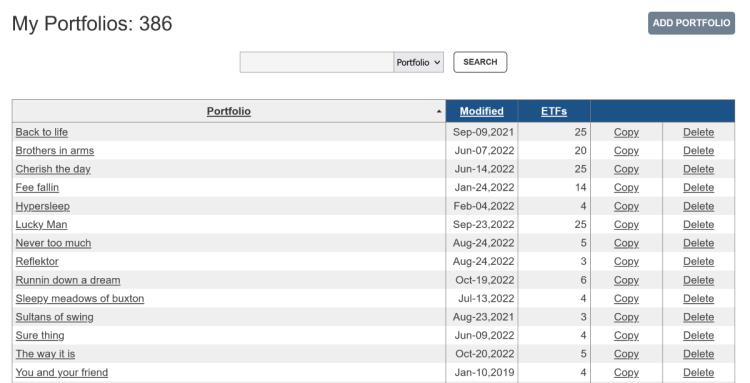
Oct 20, 2022
in Moving Average, Channel
Trend following approaches, such as Moving Averages and Channels, preserve capital by cutting losses and as such they need sustained bear markets to outperform.
While they will generally capture the bulk of a bull market, the inherent lag means that a trend strategy can never sell at the high of an up move and can end up surrendering significant gains before exiting.
Consequently, outside of bear markets, the best they can do is to be fully invested and match the performance of the benchmark. However, bull market corrections and the short-lived directional moves of sideways markets mean that trend-following methods will inevitably suffer some whipsaw losses.
In other words, lengthy periods of underperformance should be expected in bull and range-bound markets. For those that can endure these mentally taxing and financially challenging periods, the pay off is the avoidance of major bear market drawdowns.
Below are a pair of backtests, a channel and a moving average, on a simple global 60/40 portfolio (VTI 35%, VGK 10%, VPL 10%, VWO 5%, AGG 30% and TIP 10%). Examination of the annual returns shows both the strengths and weaknesses of these trend following methods.
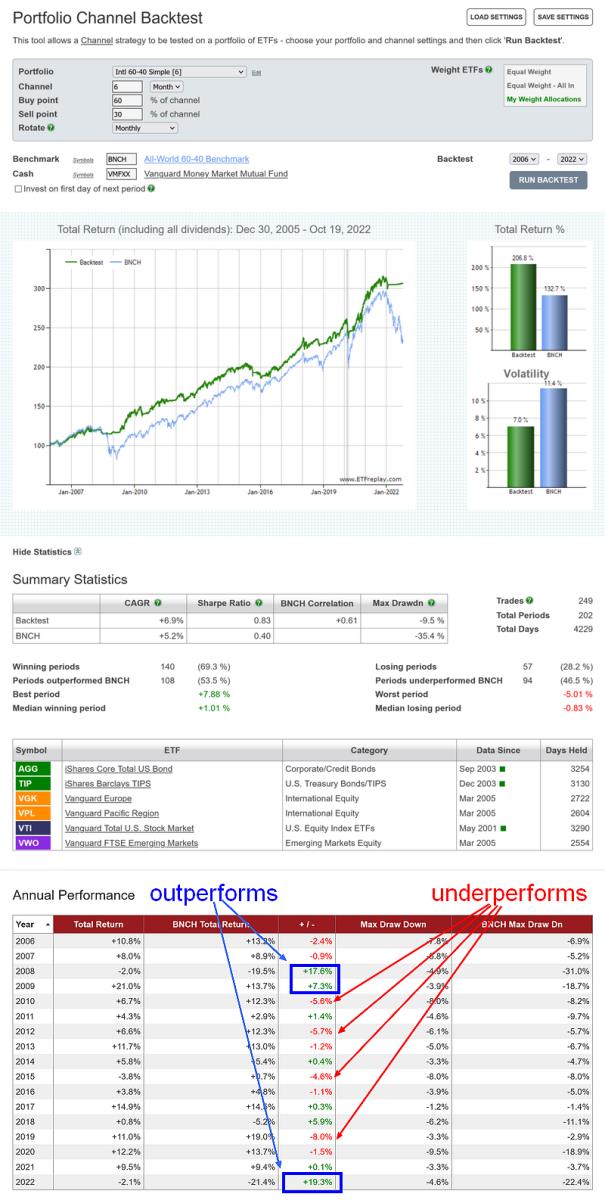
click image to view full size version
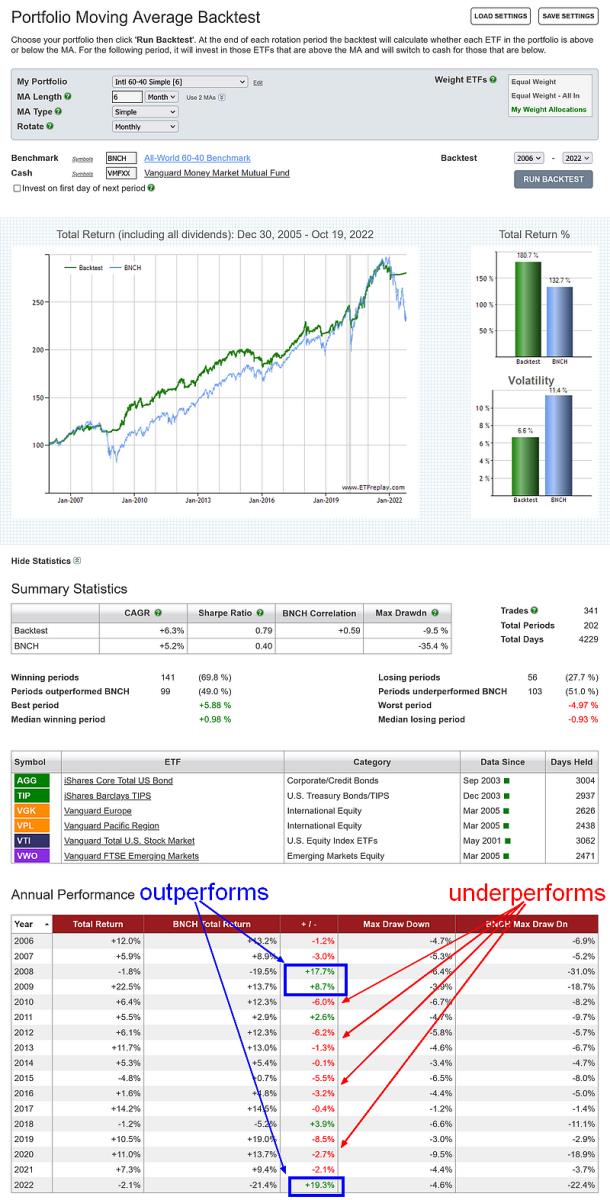
click image to view full size version
Portfolio Channel Backtest
Portfolio Moving Average Backtest